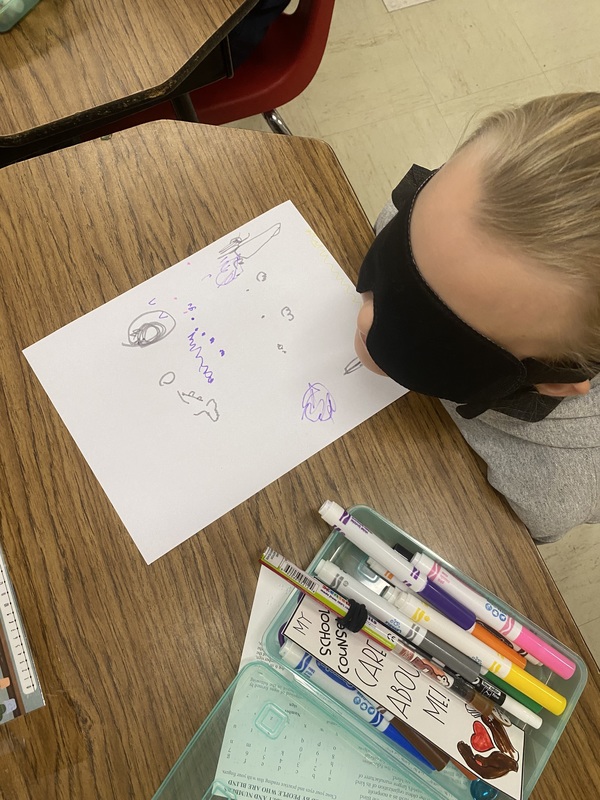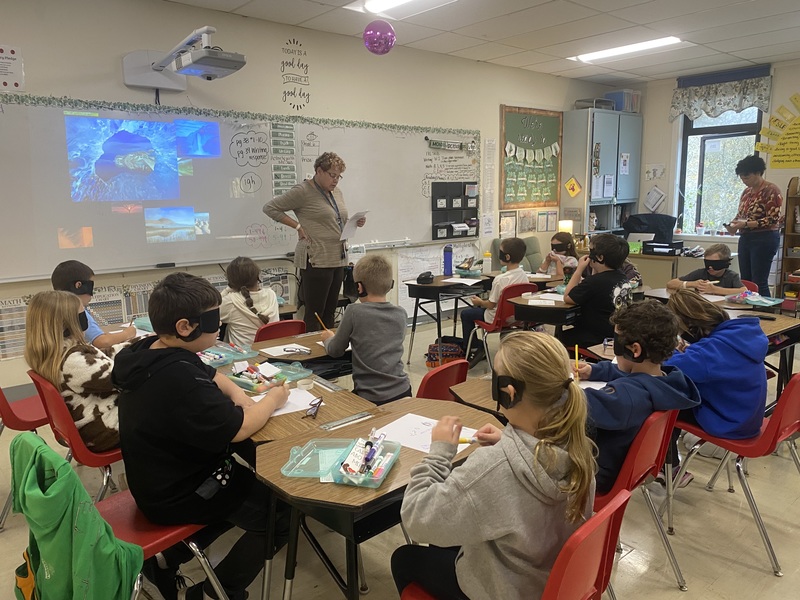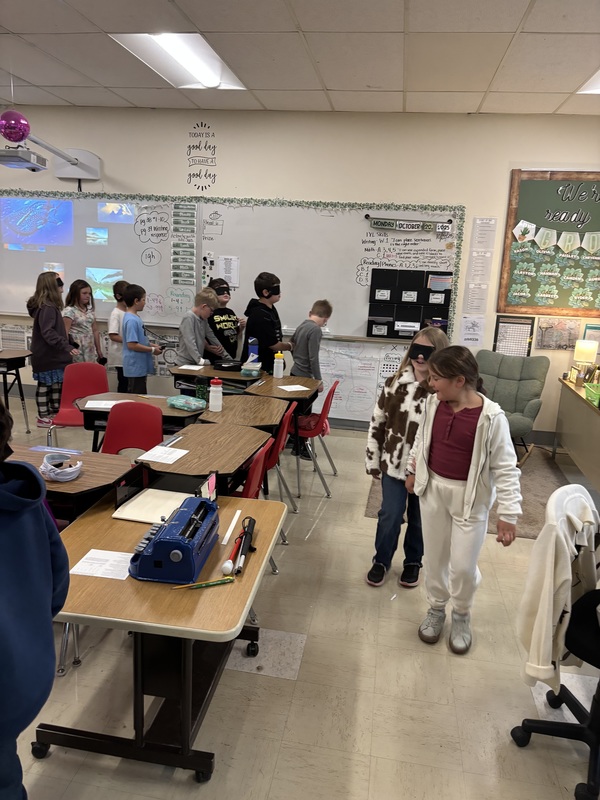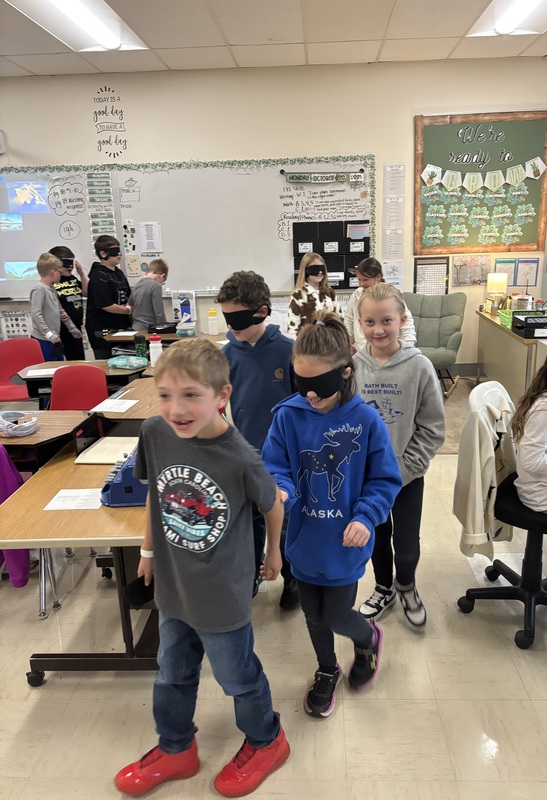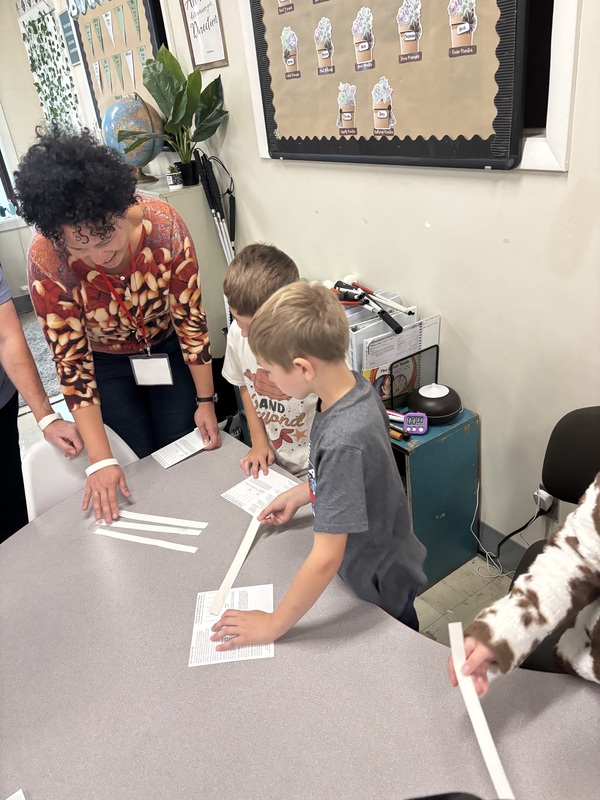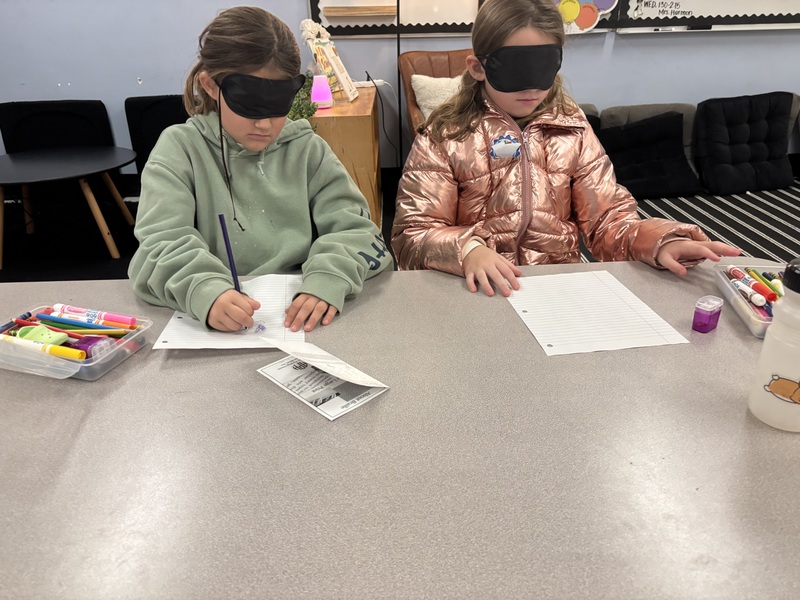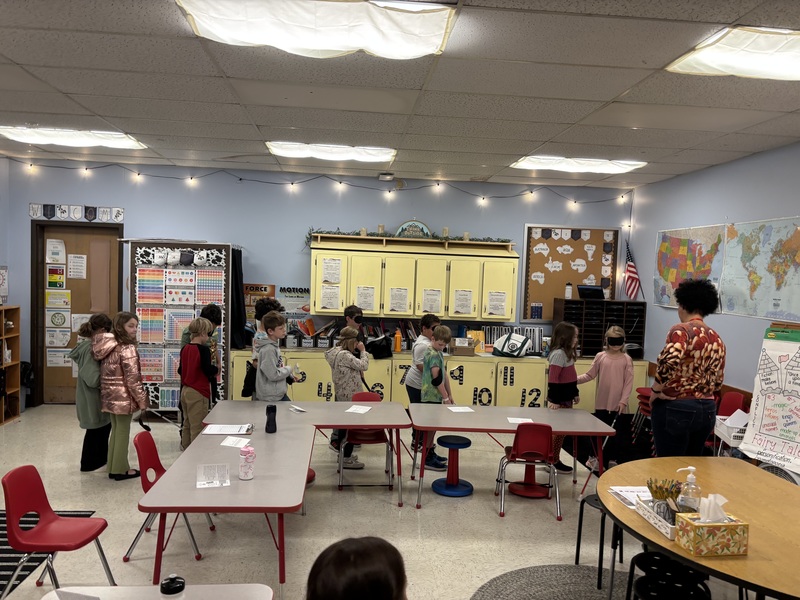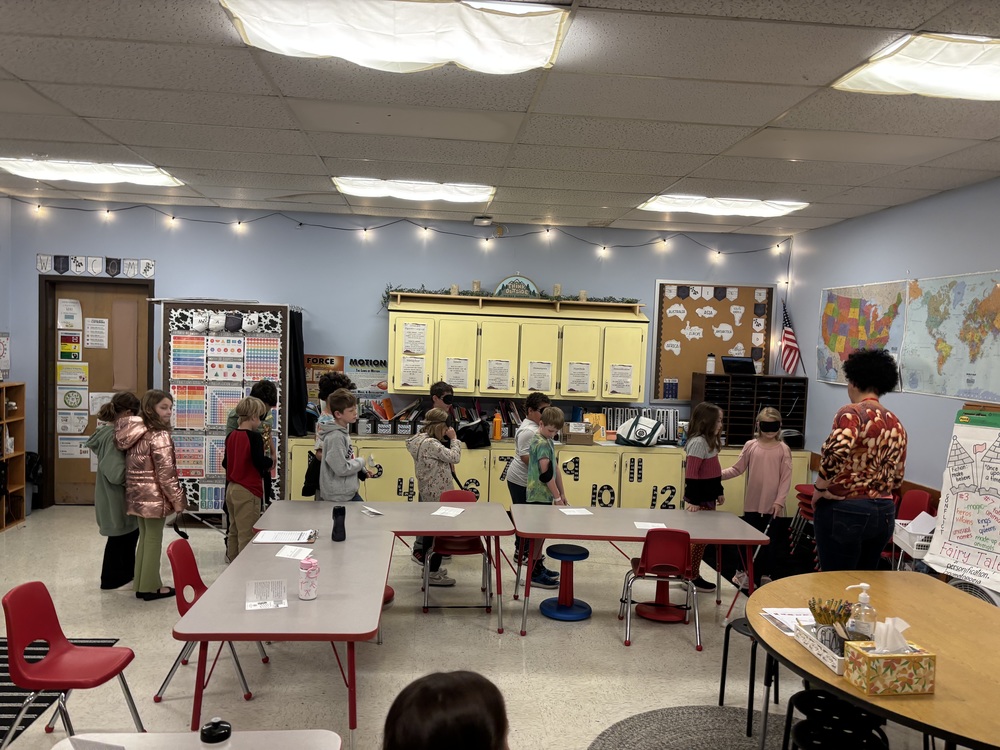On October 20th, 2025, third grade students in Miss Gove’s and Mrs. Rossignol’s class participated in an inservice session where they learned about how it may feel to navigate everyday life as a blind or visually impaired person. Sue Morlan, introduced the differences between being a visually impaired person versus being blind, how someone who is blind can’t see other’s facial expressions or body language, and the basics of braille. Students were taught how visually impaired/blind students have to learn over 200 letters/combinations where students without visual impairments only learn 26 letters. They were also reminded how visually impaired/blind people can not rely on pictures or skimming reading passages as they have to use braille to read and write.
The first activity that was presented was brailled bracelets that were laid out on the table for students to read on their own. They were given a reference card that showed the braille alphabet to help them identify which bracelet was theirs. The second activity was led by Coretta Cooper, an orientation and mobility instructor, in a cane lesson where students were first described what a human guide is and their responsibilities and then led in a practice where students partnered up with a classmate who was wearing a blindfold. They would then guide their partner around the room around desks and chairs while verbally describing where to go and what was around them. Lastly, the third activity was led by Jennifer Hembree, 3-5 special education teacher, where she read a story about a make-believe creature. She first described to students how it is challenging for a visually impaired/blind person to draw a picture of something specific or identifying colors when they haven’t seen colors or what is being asked of them. Mrs. Hembree first asked students to put on their blindfolds and try to locate their markers. They then listened and drew a picture of what was described without picking out specific colors or knowing what exactly they were drawing. After taking their blindfolds off, they realized how challenging it is to draw something without visually seeing where their marker is on the paper.
Overall, the third grade students were able to listen and try to understand what it may be like as a visually impaired or blind person. While we can’t truly experience what being blind is like because we have visual memory, we were all able to listen and participate in activities that would make us consider what it may be like and how we can be a supportive classmate or community member to someone who is visually impaired or blind. It was a great opportunity to bring to our students to help them understand and learn about different challenges that others face daily whether it is now in school as a child or one day in the community as an adult. Great job, third graders!
Shelby Gove
